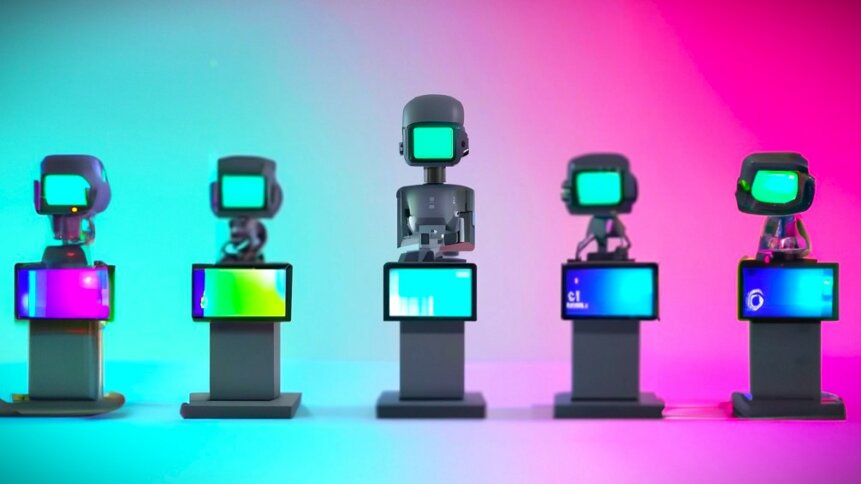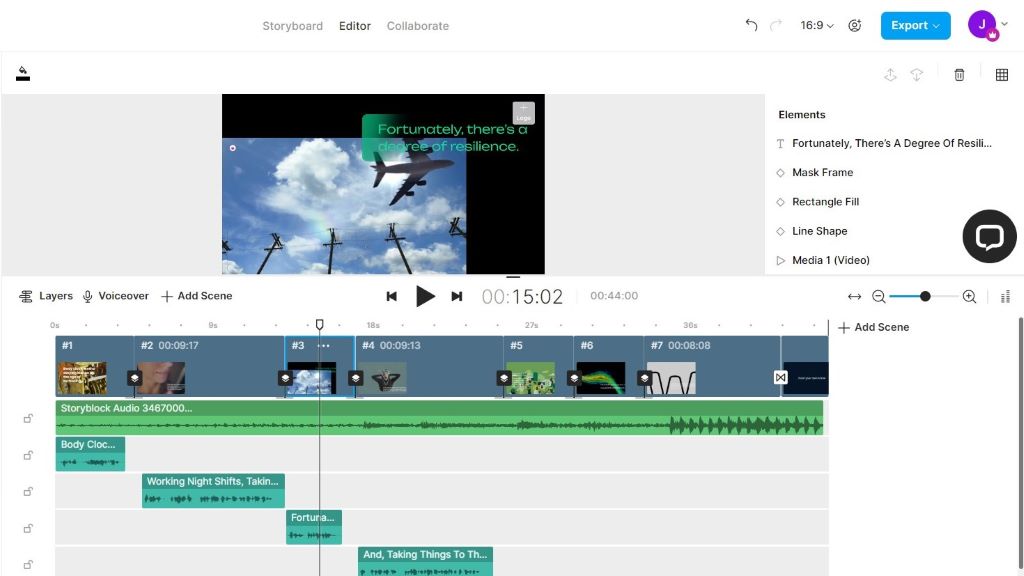Can AI make movies? A text to video review

|
Getting your Trinity Audio player ready...
|
Can AI make good movies? Screenwriters and actors in the US think so and have been on strike to protect their livelihoods. But what if you’re not in the film business and don’t have the skills to succeed in Hollywood? Can AI help those outside the movie industry tell better stories, enabling businesses and other organizations to stand out from the crowd?
A how-to guide for using AI to make movies
TechHQ touched on this theme earlier this year, looking at the rise of text-based video editing apps – a major time-saving tool for anyone wanting to turn raw footage quickly into a rough, fine, or even final cut. But that’s not the only way that AI can help make movies. And to find out more, it’s time to get hands-on.
Human-in-the-loop version (the vanilla AI text to video production can be found at the bottom of the article).
Today, thanks to wonders of generative AI and related techniques, it’s possible to turn text into video without lifting a camera. You can get started by simply typing a prompt into a text box, to transform an idea into a dynamic slideshow, YouTube video, or clip to post on social media. And that’s just the beginning.
It’s possible to go much further and add on-screen avatars to play the role of narrators. For a more personalized look, some tools allow users to create lifelike versions of themselves by uploading anywhere between 5 and 20 photos and feed the avatars with audio training samples to enable voice creation.
Our testbed for today will be InVideo – a SaaS product that uses AI to make movies by converting text to video. Users can upload their own script or have generative AI create a script based on a text prompt. And, as mentioned, there are a ton of other features included, such as avatar options and a fully-functional web-based video editor.
The best place to start is to navigate to the help page, which includes tutorial clips, and start familiarizing yourself with the steps required to turn text to video. However, users can jump straight in by selecting an interesting-looking template and either adding some text or providing a link (in this case, to the TechHQ story – ‘Body clock maths: staying human in the age of technology’).
Based on the link, the InVideo tool grabs header and main body text, and the next step is to click on significant sentences within the content to build out scenes. Once you have those, the editor generates a storyboard – selecting clips based on the keywords in each of the scene sentences.

InVideo online editor view: the layout and available options make it easy for users to add a human touch to the AI generated first draft.
Background music is included underneath the visuals, and there’s the option to autogenerate a voiceover track. Realistic-sounding voices are available in US, British, and Australian English, as well as a host of other languages such as Japanese, Korean, Hindi, Thai, Spanish, and German – to list just a few options.
A nice touch is the ability to mix up the voices throughout the video – for example, to add interest and draw attention to quotes. And it’s worth thinking of the storyboard as a highlights reel for the content grabbed via the link.
To include the full script, you’d need to select all of the sentences in the text panel, which might make for a long video. But, if you want to discover whether AI can make movies, then why not give it a go?
If the AI scene generator has selected clips that you feel don’t work or could be improved on, you can replace those visuals with alternatives available in the video and picture libraries. Relevant material is easy to find by just typing a description of what you are looking for into the search bar.
For example, the opening sequence wasn’t quite on topic for the TechHQ story about body clock maths, but it was easy to swap in some great footage from the included media library. In fact, as users get to grips with the process – depending on how keen they are – it’s likely that a human eye will be able to add extra sparkle to the production.
AI can make movies, but if users know their audience, subject matter, or both, then it’s possible that text-to-video tools serve more as teachers or a springboard to getting started in producing clips. InVideo can undoubtedly deliver a final cut that does the job, based on just a few words or sentences, which is impressive.
However, this reviewer would argue that the tool is even better at bringing out the moviemaker in the user and inspiring human touches to create footage that’ll engage an even larger audience.
UI design is underrated for AI. Sometimes they go hand in hand with new model capabilities in delightful ways.
Here's a very clever demo: you can use rich text (bold, font style, color) to assign different types of weights to each token, making image generation controllable in a… pic.twitter.com/rZOU4I7hYc
— Jim Fan (@DrJimFan) September 22, 2023
If you are a hands-off kind of person, then having AI make movies may well appeal. But if you like to tweak colors, optimize animations, adjust timings, and generally can’t stop yourself from digging into the settings, then you’d probably enjoy using a video editor and going the manual route.
InVideo’s web-based editor is a great place to start learning those skills. AI plays a valuable role as a tutor to highlight what works well and, occasionally, what doesn’t. The video and picture libraries provide a ton of visual content to support the script and make it possible to bring stories to life.
Once you’re happy with the edit, it’s time to export the clip in 720p (or 1080p Full HD, if you have a paid-for account). Rendering the sequence into a downloadable file took just a few minutes for the 44-second clip shown above.
It’s a wrap: thoughts on InVideo
At the top of the piece, the question we asked was can AI make good movies? But, having put text-to-video to the test, the findings are even more interesting. Text-to-video tools turn out to be a great inspiration for going beyond the AI baseline to enrich the story-telling clips, social media posts, and other visual assets by keeping the creator in the loop.
Having spent a few hours using InVideo, it’s been a great introduction to the craft. AI does make a difference – the computer-generated narration is incredibly helpful and eliminates the need for a recording studio and noise-free surroundings. And having a rich image and video library to dip into takes viewers to places that would otherwise be much harder to picture on screen. Plus, the avatars look good fun too – no doubt even more so if you go the extra mile and create your own.
Vanilla AI version, for reference.
Disclosure: InVideo provided access to features available on the Unlimited plan for the purposes of this review.









